Why Anping Bridge Should Be on Your Travel Itinerary: History and Scenic Views
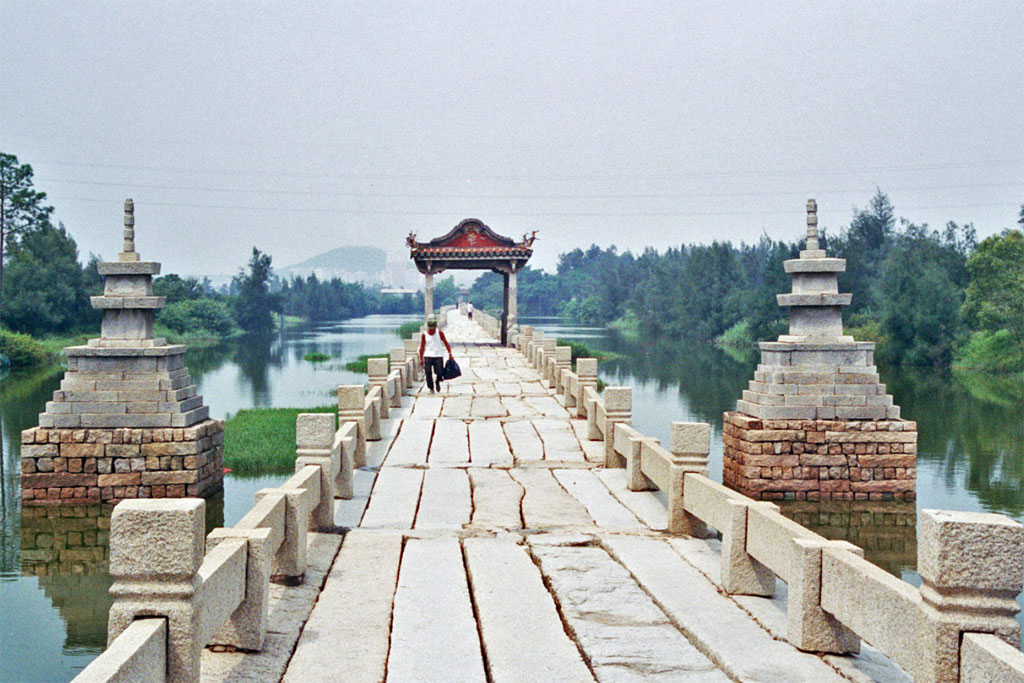
An Essential Guide to Visiting Anping Bridge
Nestled in the heart of Jinjiang, Anping Bridge stands as a testament to the rich historical tapestry of China, attracting visitors from around the globe. This picturesque structure, which beautifully marries ancient architecture with the serene backdrop of a sprawling park, is more than just a bridge—it’s a gateway into China’s past. Originally part of the legendary Silk Road, the bridge has witnessed centuries of history unfold, making it a must-visit for anyone keen to explore the profound stories etched into its stones.
As you stroll along the long, straight pathway of Anping Bridge, you’ll find yourself enveloped in the peaceful ambiance of the surrounding park, where locals gather to walk, jog, and enjoy nature. The bridge itself, reconstructed yet retaining its original stones, offers a stunning visual experience and a perfect spot for photography enthusiasts. Whether you’re interested in history, architecture, or simply seeking a tranquil escape, Anping Bridge promises an enriching experience that will linger in your memory long after you leave. Embrace the charm, connect with friendly locals, and take a moment to reflect on the historical significance of this remarkable landmark. Let Anping Bridge be a highlight of your journey through China, where the past and present beautifully intertwine.
In This Guide
- An Essential Guide to Visiting Anping Bridge
- The Rich History and Legends of Anping Bridge
- Main Highlights: What You Absolutely Can’t Miss
- Planning Your Visit: A Practical Guide
- Tickets: Prices, Booking, and Tips
- How to Get There: A Complete Transportation Guide
- Local Cuisine and Accommodation Nearby
- Frequently Asked Questions
- Final Thoughts on Your Trip
The Rich History and Legends of Anping Bridge
The Anping Bridge, nestled in the picturesque surroundings of Anhai Town in Jinjiang, is a remarkable architectural gem that reflects centuries of history and cultural significance. Originally constructed during the Song Dynasty, approximately a millennium ago, this ancient stone bridge has witnessed the rise and fall of dynasties, the ebb and flow of trade routes, and the growth of the surrounding community.
A Historical Overview
The bridge was built using large, precisely cut stones, showcasing the engineering prowess of its time. It served as a vital link for merchants and travelers traversing the ancient Silk Road, a network of trade routes that connected the East and West. This strategic location allowed Anping Bridge to play a crucial role in the exchange of goods, ideas, and cultures, helping to foster a rich tapestry of interactions between diverse peoples.
Over the years, the bridge has undergone several reconstructions. While maintaining its original stones and design, these renovations were necessary to preserve its structural integrity against the relentless march of time and nature. Today, visitors can walk along the long and straight path of the bridge, feeling a deep connection to the past as they traverse the same stones that countless others have walked on for generations.
Legends and Lore
As with many historical landmarks, Anping Bridge is steeped in local legends. One popular tale recounts the story of Cai Xiang, a celebrated scholar and poet of the Song Dynasty, who is believed to have crossed the bridge during his travels. It is said that he was so inspired by the beauty of the surrounding landscape that he composed poems that are still cherished today. A statue of Cai Xiang stands at one end of the bridge, paying homage to this connection between the past and present.
Another legend tells of a mysterious traveler who once crossed the bridge under the glow of the moonlight, bringing with him tales from distant lands. His stories captivated the local villagers, sparking dreams of adventure and exploration. This narrative symbolizes the bridge’s role as a conduit not just for trade, but for the sharing of dreams and aspirations.
A Community Landmark
In contemporary times, Anping Bridge has transformed into a serene community park where locals and visitors alike come to stroll, jog, and reflect. The surrounding park is expansive, providing a tranquil escape from the hustle and bustle of city life. Families gather, joggers pace the pathways, and friends enjoy leisurely walks, all while soaking in the historical significance of the bridge.
As you explore the area, take a moment to appreciate the harmonious blend of nature, community, and history that Anping Bridge embodies. This enchanting spot is not just a bridge; it is a testament to the enduring spirit of the people and the rich narratives that span the ages. Whether you are a history buff, a casual traveler, or someone seeking tranquility, the Anping Bridge offers a unique glimpse into the past while inviting you to create your own memories in the present.
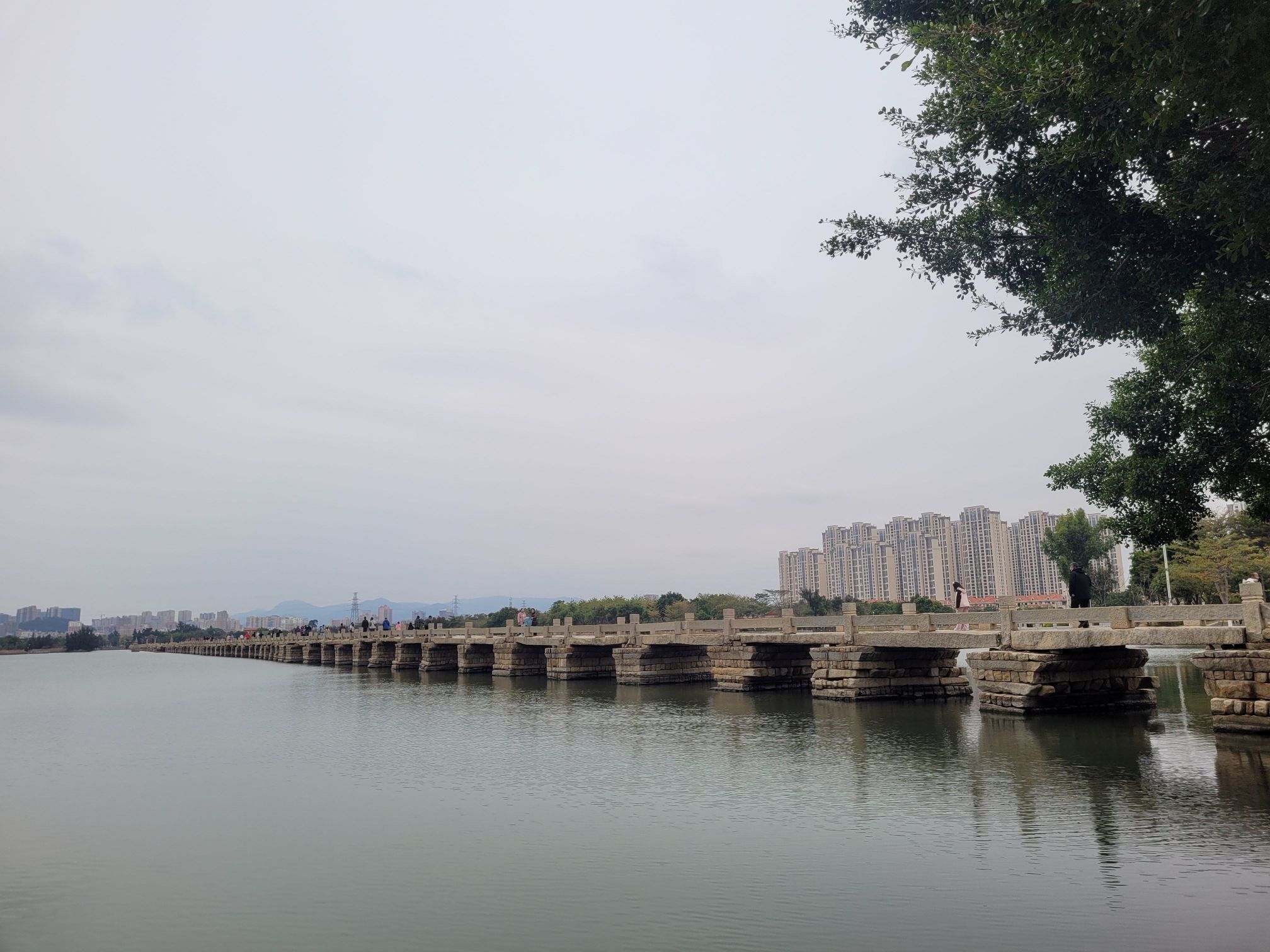
Anping Bridge.
Main Highlights: What You Absolutely Can’t Miss
When visiting Anping Bridge, you’ll discover a unique blend of history, natural beauty, and local culture that makes this landmark a must-see. Here are the main highlights that you absolutely cannot miss:
1. The Bridge Itself
Anping Bridge is more than just a crossing; it’s a historical monument that has stood the test of time. Originally built during the Song Dynasty, this ancient stone bridge showcases impressive architecture, with large cut stones that have been preserved through the years. Although it has undergone reconstruction, much of its original charm remains intact. Walking along the bridge provides a sense of connection to the past, making it a perfect spot for reflection and photography.
2. Picturesque Park Surroundings
The bridge is situated within a sprawling community park, which is one of the largest you’ll likely encounter. The park features expansive walking paths around a serene lake, ideal for a leisurely stroll or a morning jog. As you meander through, you’ll encounter friendly locals enjoying the park, which adds to the welcoming atmosphere. Bring a picnic or simply relax on the grass while soaking in the picturesque views of the bridge and surrounding landscape.
3. Cultural Significance
Anping Bridge holds historical importance as part of the ancient Silk Road, serving as a vital connection for trade and cultural exchange. While exploring the area, take a moment to appreciate the rich history that the bridge represents. Interpretive signs and local guides can offer insights into the bridge’s role in the region’s development, making your visit both informative and enriching.
4. Local Wildlife and Scenic Beauty
The park surrounding Anping Bridge is not just about the bridge itself; it is also a haven for wildlife. Keep an eye out for various bird species and other local fauna as you explore the lush greenery. The combination of natural beauty and historical architecture creates a stunning backdrop that’s perfect for photography enthusiasts.
5. Nearby Attractions
Extend your visit by exploring other nearby attractions, such as the Quanzhou Longshan Temple, or indulge in local cuisine at nearby restaurants. The proximity of these sites allows you to immerse yourself in the local culture and history even further, making your trip more rewarding.
6. Ideal for All Ages
Whether you’re traveling solo, with a partner, or with family, Anping Bridge offers something for everyone. Kids can enjoy the open spaces to run and play, while history buffs can delve into the stories that surround this ancient structure. Couples might find a romantic ambiance as they stroll hand-in-hand across the bridge at sunset.
7. Accessibility
Anping Bridge is easily accessible, making it a convenient stop on your journey. With regular opening hours from 8:00 AM to 5:30 PM, you can plan your visit at a time that suits you best, ensuring you have ample opportunity to explore and enjoy all that this historic site has to offer.
In summary, a visit to Anping Bridge is not just about crossing a span of stone—it’s about connecting with the history, culture, and nature of the region. Don’t miss the chance to experience this remarkable landmark during your travels!
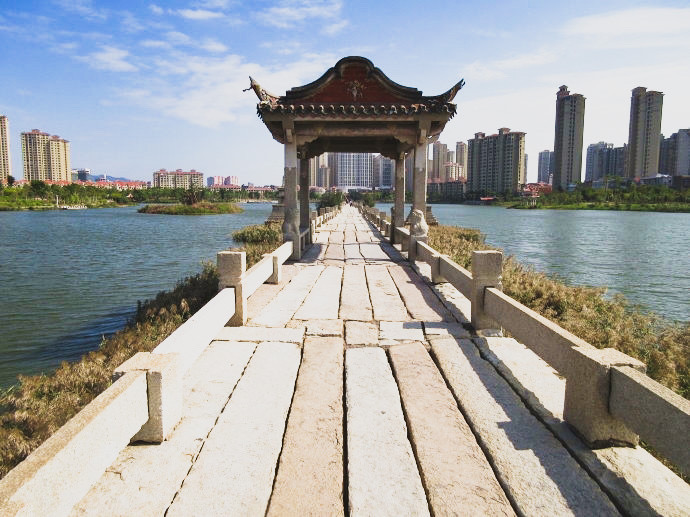
Anping Bridge.
Planning Your Visit: A Practical Guide
Planning Your Visit: A Practical Guide to Anping Bridge
Visiting Anping Bridge is not just about crossing a structure; it’s about stepping into a serene slice of history set amid beautiful landscapes. Here’s everything you need to know to make the most of your visit.
Getting There
Anping Bridge is located in Anhai Town, Jinjiang, China. If you’re navigating by public transport, consider taking a bus or taxi from nearby cities like Quanzhou or Xiamen. Alternatively, renting a car can give you the flexibility to explore the surrounding areas at your own pace.
For those flying in, the closest airport is Jinjiang Airport (JJN), which is about 10 kilometers away. From the airport, taxis are readily available to take you directly to the bridge.
Opening Hours
Anping Bridge is open daily from 8:00 AM to 5:30 PM. Arriving early in the morning is recommended to avoid crowds and to enjoy the tranquil atmosphere.
Admission Fees
Entry to the park surrounding Anping Bridge is generally free, making it an accessible destination for travelers. However, be sure to check for any special events or exhibitions that may require a ticket.
What to Expect
The bridge itself is a stunning sight, constructed using original stone materials but reconstructed at least once. Its long, straight pathway is perfect for leisurely strolls, allowing visitors to absorb the scenic views of the surrounding park.
The adjacent park offers extensive walking trails around a picturesque lake, making it a popular spot for both locals and tourists. Expect to see joggers, families, and friends enjoying picnics, which adds to the lively yet peaceful ambiance of the area.
Activities Nearby
While the bridge is a highlight, the park offers plenty of opportunities for exploration:
- Walking and Jogging Trails: Spend some time walking along the lake or jogging through the well-maintained paths.
- Cultural Exploration: Look out for local events or festivals that may be happening during your visit. Engaging with the community can provide a deeper understanding of the region’s culture.
- Photography: The bridge and its surroundings offer beautiful backdrops for photography, especially during sunset. Don’t forget your camera!
Dining Options
While there are limited dining facilities directly at Anping Bridge, nearby areas offer a variety of restaurants and cafes. Sample local cuisine, including seafood dishes and traditional Fujian specialties. For dessert lovers, a visit to Chocolicious, located a few miles away, promises sweet treats to end your outing on a high note.
Tips for a Great Visit
- Wear Comfortable Shoes: Given the extensive walking paths, comfortable footwear is essential.
- Stay Hydrated: Bring a water bottle, especially if you plan to walk around the park for an extended period.
- Respect Local Customs: As you engage with locals, be respectful and open to learning about their culture and traditions.
- Plan for Weather: Check the weather forecast ahead of your visit. An umbrella or sunscreen may be necessary depending on the season.
Nearby Attractions
If you’re looking to extend your exploration, consider visiting other attractions within a short drive:
- Quanzhou Longshan Temple: A beautiful and historic religious site, perfect for those interested in architecture and spirituality.
- Lingyuan Temple: Another stunning temple that showcases the region’s rich cultural heritage.
With its rich history, picturesque settings, and warm community atmosphere, Anping Bridge is sure to be a memorable stop on your travels through Fujian, China. Enjoy your visit!
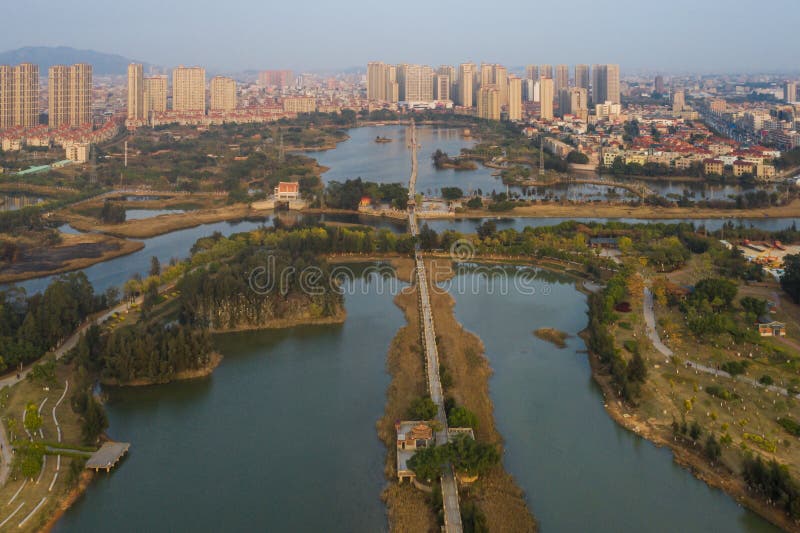
Anping Bridge.
Tickets: Prices, Booking, and Tips
When planning your visit to Anping Bridge (安平桥), you’ll be pleased to know that access to this historical site is free of charge. This makes it an excellent option for travelers looking to explore without breaking the bank. The bridge, set within a scenic community park, invites visitors to take leisurely strolls, enjoy the surrounding nature, and immerse themselves in the local culture—all without any entry fees.
Booking Your Visit
While no tickets are necessary for Anping Bridge, it’s a good idea to check local travel platforms or tourism websites for any updates regarding park hours or special events. The bridge is open daily from 8:00 AM to 5:30 PM, allowing ample time for you to explore the area at your own pace.
Tips for Your Visit
-
Timing is Key: To enjoy a more peaceful experience, consider visiting during weekdays or early in the morning. The afternoons, especially on weekends, can see an influx of local visitors and families.
-
Stay Hydrated: If you plan to walk around the expansive park surrounding the bridge, make sure to bring water and snacks. There are few facilities within the park, so being prepared will enhance your experience.
-
Capture the Moments: The picturesque scenery around the bridge is perfect for photography. Don’t forget to bring your camera to capture the stunning views and the serene atmosphere.
-
Explore Nearby Attractions: After visiting Anping Bridge, consider exploring other nearby attractions such as the Quanzhou Longshan Temple or the local food scene. Many guided tours are available that can help you make the most of your visit to the Jinjiang area.
-
Public Transport: If you’re not driving, check local bus routes or rideshare options to reach Anping Bridge conveniently. It’s always a good idea to plan your return journey as well.
By keeping these tips in mind and taking advantage of the free access to Anping Bridge, you’ll ensure a delightful and enriching experience during your travels. Enjoy the journey across one of Jinjiang’s most charming landmarks!
How to Get There: A Complete Transportation Guide
Getting to Anping Bridge: Your Transportation Guide
Visiting the historic Anping Bridge (安平桥) is a delightful experience, and reaching this charming destination in Jinjiang, China, is quite straightforward. Here’s how to navigate your way to this picturesque site.
1. By Air
The nearest major airport to Anping Bridge is Xiamen Gaoqi International Airport (XMN), located approximately 70 kilometers away. This airport serves numerous international and domestic flights, making it a convenient entry point for international travelers.
- From Xiamen Airport:
- Taxi: The most direct option is to take a taxi. The journey will take around 1 hour and cost approximately ¥200-¥300 (around $30-45 USD).
- Airport Shuttle: Look for shuttle services that head towards Jinjiang. This may take longer but can be more economical.
- Public Bus: There are buses from the airport to Jinjiang, but they may require transfers and can take up to 2 hours.
2. By Train
Jinjiang is well-connected by rail, making it accessible from major cities like Xiamen, Fuzhou, and Quanzhou.
- From Xiamen:
- Take a high-speed train from Xiamen North Railway Station to Jinjiang Station. The journey lasts about 30-40 minutes.
-
From Jinjiang Station, you can catch a taxi (around 20 minutes) or use public transport to reach Anping Bridge.
-
From Quanzhou:
- A local train can get you to Jinjiang in about 30 minutes. Taxis from Jinjiang Station to the bridge will take around 20 minutes.
3. By Bus
If you prefer traveling by bus, several long-distance buses operate from nearby cities to Jinjiang.
- From Quanzhou:
-
Frequent buses run from Quanzhou’s main bus station to Jinjiang. The ride takes approximately 30-45 minutes.
-
From Xiamen:
- Daily buses also leave Xiamen for Jinjiang, typically taking about 1.5 to 2 hours.
Once you arrive in Jinjiang, local transportation options are plentiful.
4. Local Transportation
The Anping Bridge is situated in Anhai Town, which is easily accessible from Jinjiang city center.
-
Taxi: A taxi from the Jinjiang city center to Anping Bridge will take about 20-30 minutes, costing roughly ¥50 (around $8 USD).
-
Public Transportation: If you’re feeling adventurous, local buses operate frequently between Jinjiang and the bridge area. Be sure to check the schedule as it may vary.
5. Walking and Cycling
For those who enjoy a bit of exercise, walking or cycling around the scenic areas near Anping Bridge is highly recommended. The park surrounding the bridge offers ample pathways for a leisurely stroll or bike ride.
6. Best Time to Visit
Anping Bridge is open daily from 8:00 AM to 5:30 PM. To avoid crowds and enjoy a peaceful experience, consider visiting early in the morning or late in the afternoon.
Final Tips
- Language: While many signs are in English, learning a few basic Mandarin phrases can enhance your interaction with locals.
- Cash: Although credit cards are accepted in many places, having cash on hand (in Chinese Yuan) is advisable for small purchases or taxi rides.
With this comprehensive transportation guide, reaching Anping Bridge should be a breeze, allowing you to focus on enjoying the tranquil beauty and rich history that awaits you!
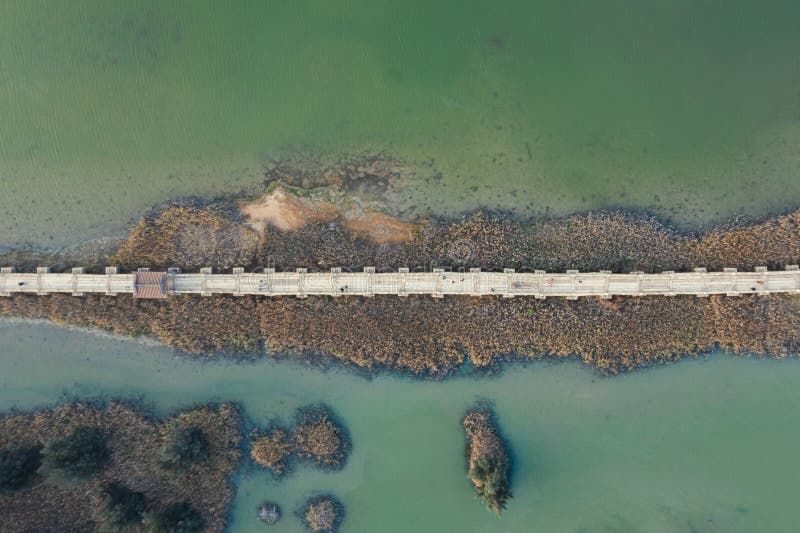
Anping Bridge.
Local Cuisine and Accommodation Nearby
When visiting the picturesque Anping Bridge in Jinjiang, you’ll not only find a stunning slice of history but also an opportunity to savor local delicacies and enjoy a comfortable stay nearby. Here are some delightful culinary and accommodation options to enhance your experience.
Culinary Delights
Chocolicious
Just a short drive from Anping Bridge, Chocolicious offers a sweet escape with its delectable dessert menu. Indulge in artisanal chocolates and refreshing beverages as you unwind after a day of exploration. The inviting atmosphere makes it a fantastic spot for a casual snack or a sweet treat to take with you.
Local Street Food
For an authentic taste of Jinjiang, venture into the nearby streets where you can find food stalls serving up local specialties. Try the famous Jinjiang dumplings—steamed or fried, these little pockets of joy are stuffed with flavorful fillings. Don’t miss the Fujian-style fish balls and stir-fried noodles for a true taste of the region.
Places to Stay
Wyndham Jinjiang
This upscale hotel is conveniently located within a short distance from Anping Bridge, offering luxurious accommodations with modern amenities. Enjoy spacious rooms, a relaxing pool, and a top-notch restaurant serving both local and international cuisine. It’s perfect for travelers seeking comfort and convenience.
Jinjiang Hotel
For a mid-range option, the Jinjiang Hotel provides a cozy atmosphere with friendly service. Its proximity to Anping Bridge makes it ideal for those who want to explore the area without straying far from home base. Enjoy comfortable rooms and a complimentary breakfast to kickstart your day of adventures.
Local Guesthouses
For those looking for a more intimate experience, consider staying at one of the local guesthouses. These charming accommodations often reflect the cultural heritage of the area and provide an opportunity to meet locals. Enjoy homemade meals and personalized service, making your stay truly memorable.
Whichever dining or lodging option you choose, your visit to Anping Bridge will be complemented by the rich flavors and warm hospitality of Jinjiang. Enjoy your culinary journey and restful nights!
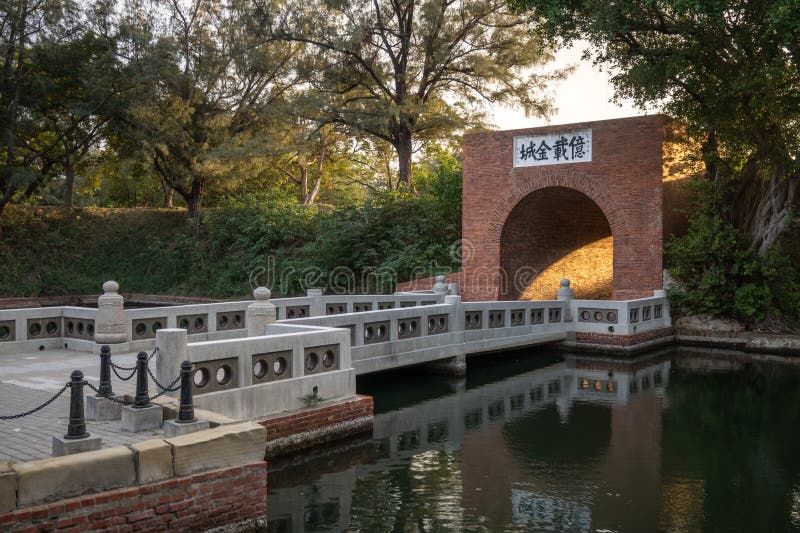
Anping Bridge.
Frequently Asked Questions
Frequently Asked Questions about Anping Bridge
1. What is Anping Bridge known for?
Anping Bridge, also known as the “Ancient Bridge,” is celebrated for its historical significance and architectural beauty. It features original stonework and has been reconstructed multiple times over the centuries, offering visitors a glimpse into the region’s rich history.
2. How do I get to Anping Bridge?
Anping Bridge is located in Anhai Town, Jinjiang, China. You can easily reach it by taxi or car from nearby cities like Xiamen or Quanzhou. Public transportation options may also be available, so checking local bus routes can be helpful.
3. What are the visiting hours?
The bridge and surrounding park are open daily from 8:00 AM to 5:30 PM. It’s advisable to arrive early to enjoy the serene atmosphere and take in the views without the hustle and bustle of larger crowds.
4. Is there an entry fee?
As of now, there is no entry fee for visiting Anping Bridge, making it a budget-friendly destination for travelers.
5. What can I do while visiting Anping Bridge?
In addition to admiring the bridge itself, visitors can stroll through the picturesque park surrounding it, enjoy leisurely walks or jogs around the lake, and take in the local flora and fauna. It’s also a great spot for photography and soaking in the peaceful ambiance.
6. Are there facilities nearby?
While the area around Anping Bridge is primarily a park, nearby restaurants and cafes can be found just a short distance away. It’s advisable to plan for food and refreshments before or after your visit.
7. Is Anping Bridge suitable for families?
Absolutely! Anping Bridge and its surrounding park are family-friendly destinations. Kids can enjoy running around and exploring the expansive green spaces while adults can appreciate the historical aspects of the site.
8. What should I wear when visiting?
Comfortable walking shoes are recommended, as you may want to explore the area on foot. Dress in layers, as temperatures can vary throughout the day, and don’t forget to bring a hat or sunscreen if you’re visiting during the warmer months!
Final Thoughts on Your Trip
As you wrap up your visit to Anping Bridge, take a moment to reflect on the blend of history, nature, and local culture that this remarkable site embodies. Walking along the bridge, surrounded by the gentle rustle of leaves and the laughter of locals, you may find yourself pondering the stories that have unfolded here over centuries. This picturesque park not only offers the chance to connect with the past but also invites you to engage with the vibrant community that thrives alongside it.
Whether you choose to stroll along the tranquil pathways, snap photos of the stunning architecture, or simply sit by the lakeside and absorb the beauty around you, Anping Bridge is more than just a destination—it’s a reminder of the rich tapestry of life that bridges generations. We encourage you to savor every moment and let the essence of this historic landmark enrich your travel experience. Remember, every journey is an opportunity to discover not only new places but also new perspectives. Safe travels, and may your adventures continue to inspire!